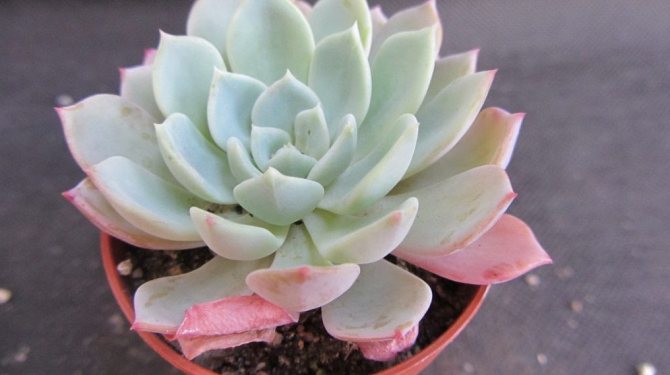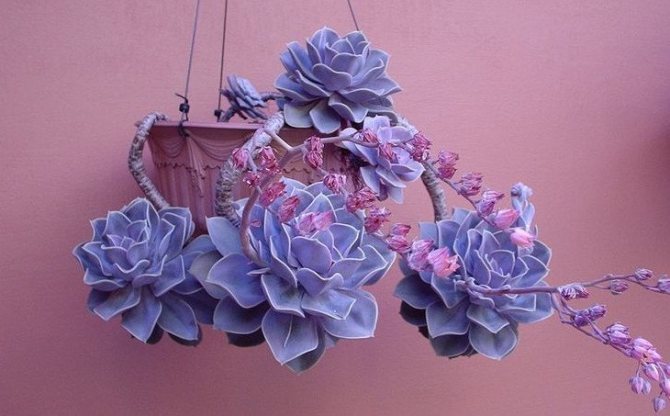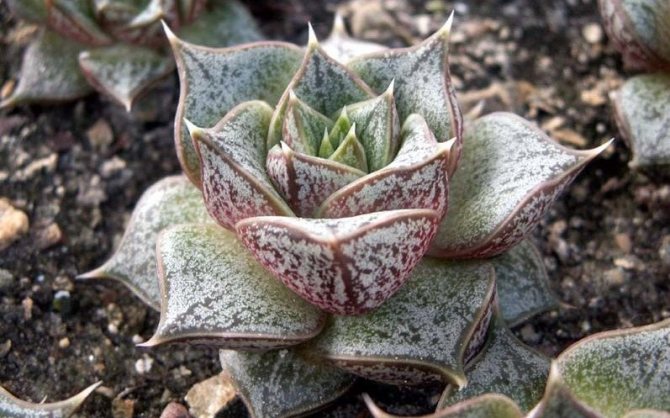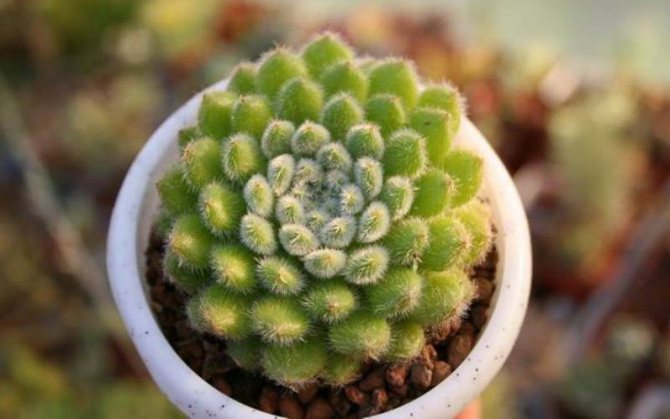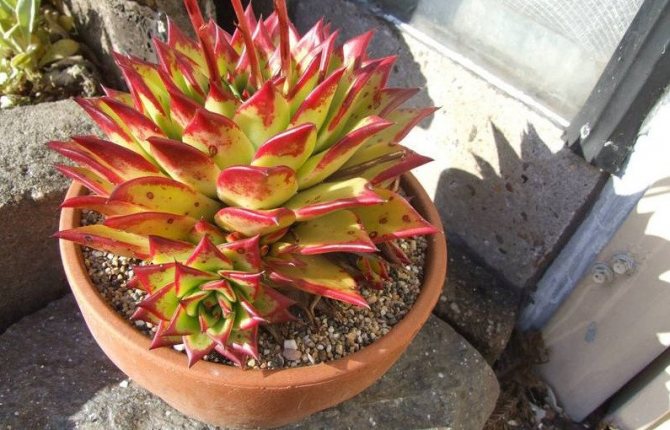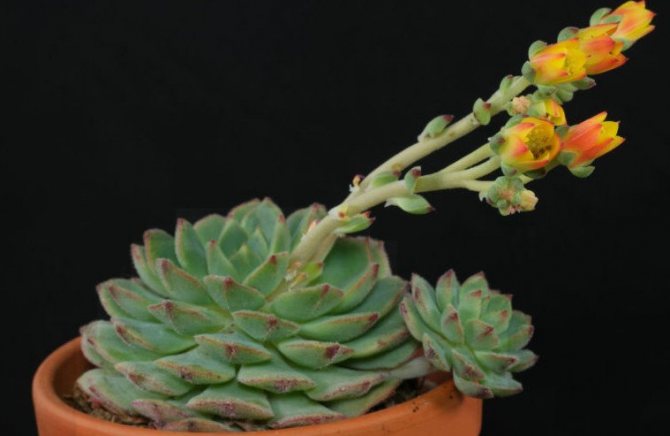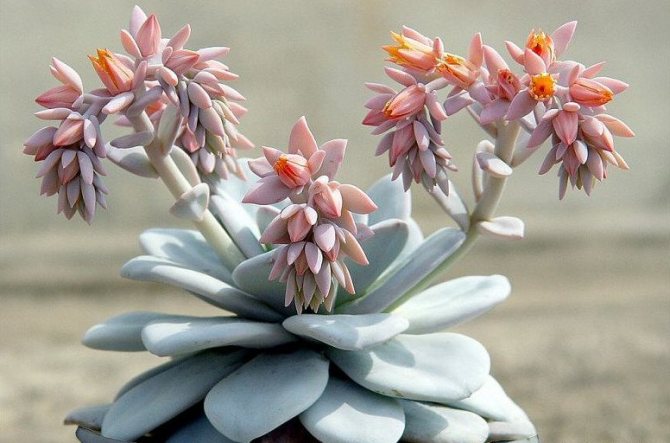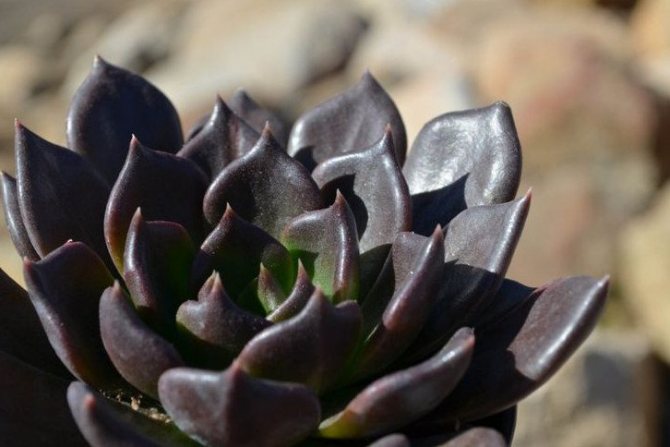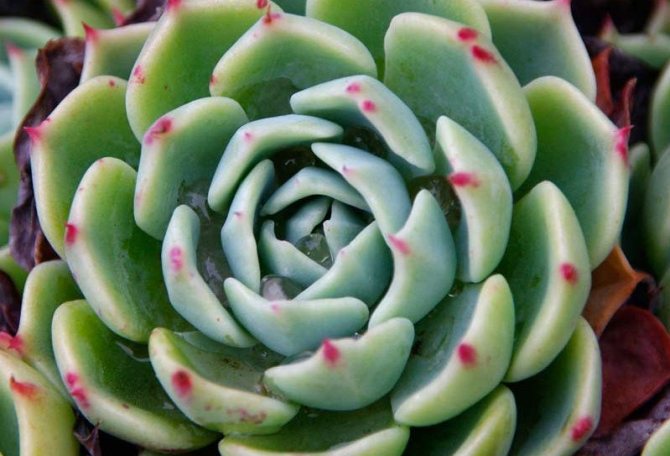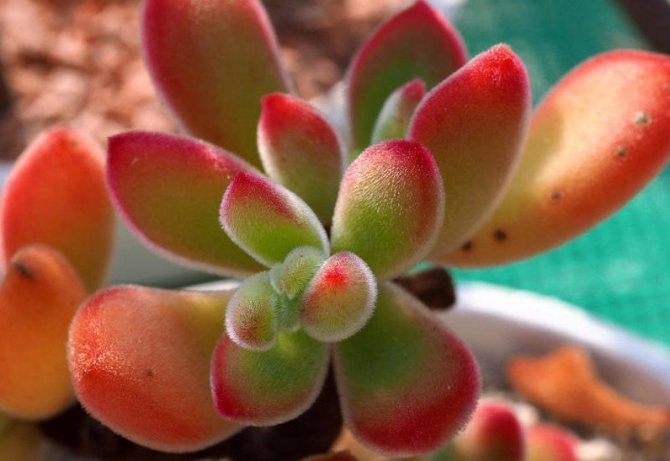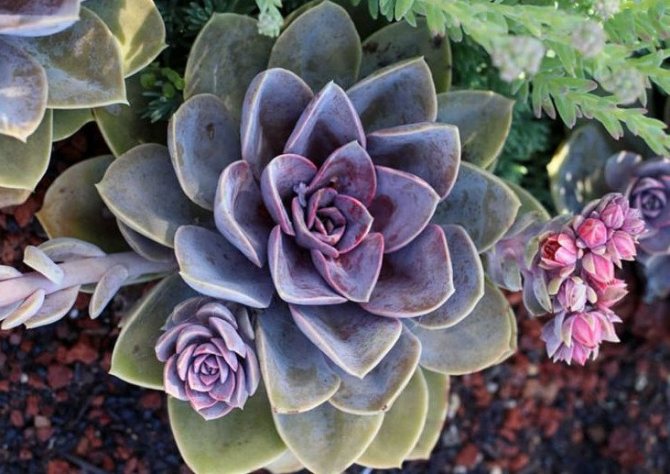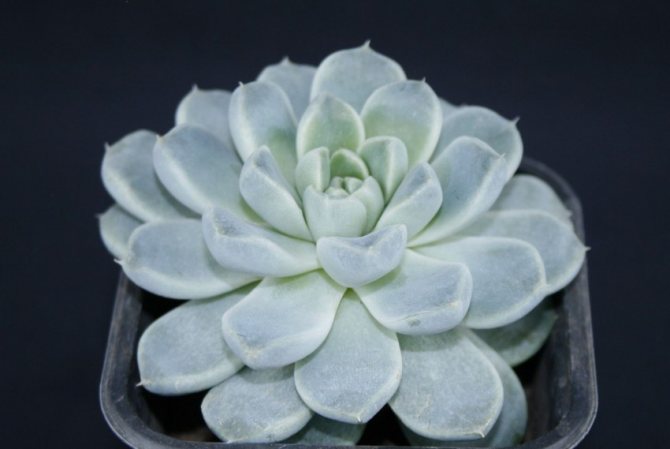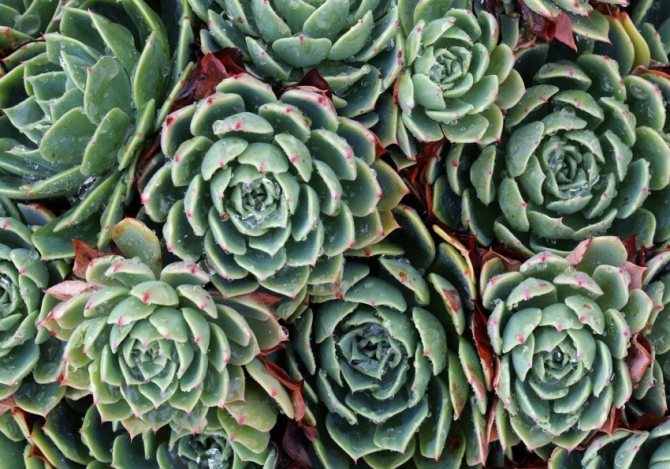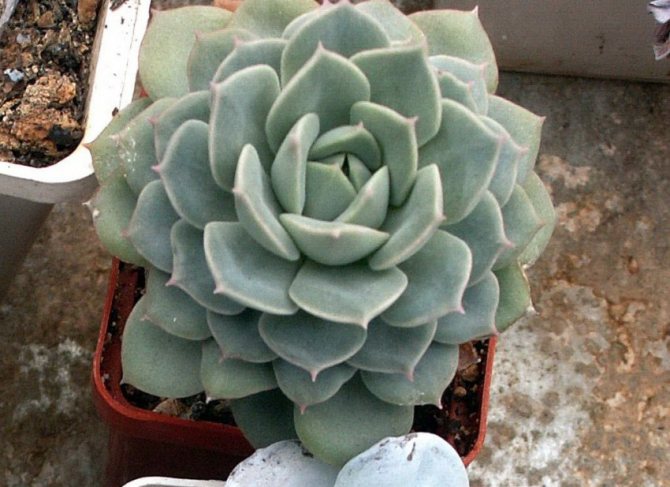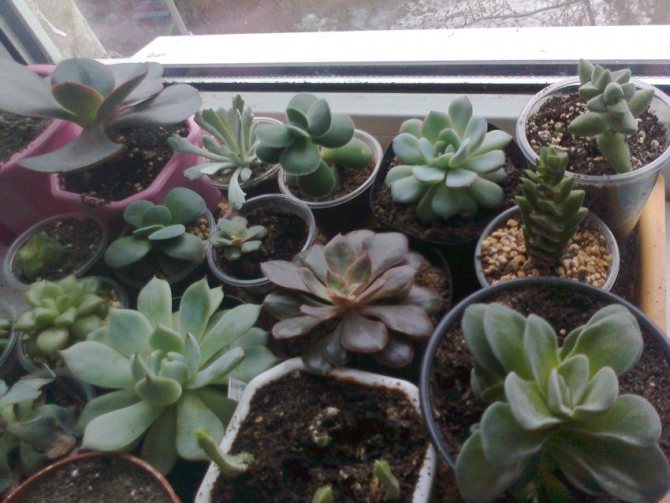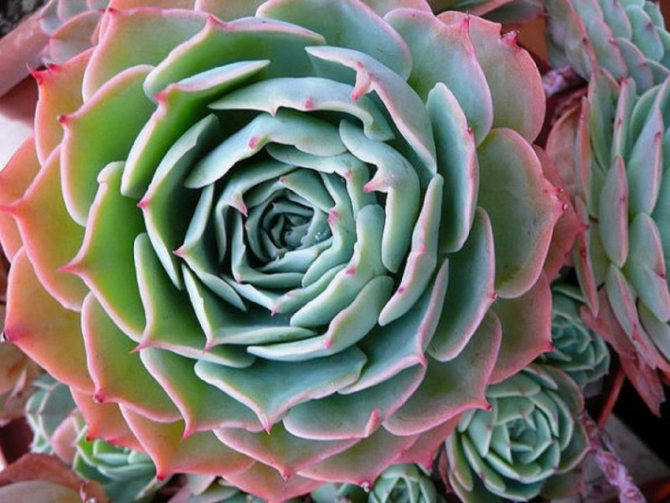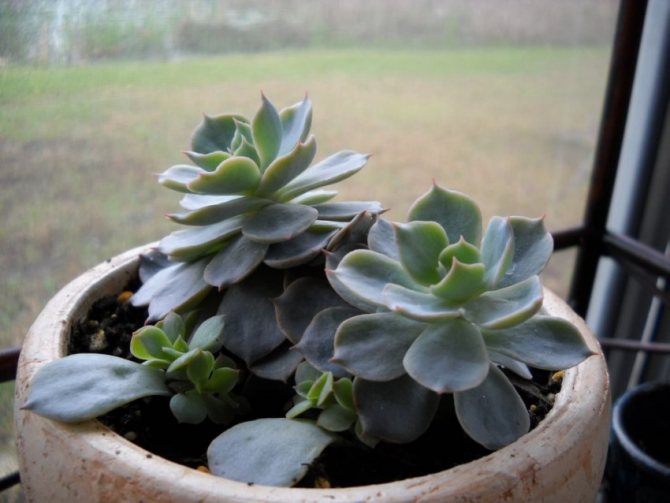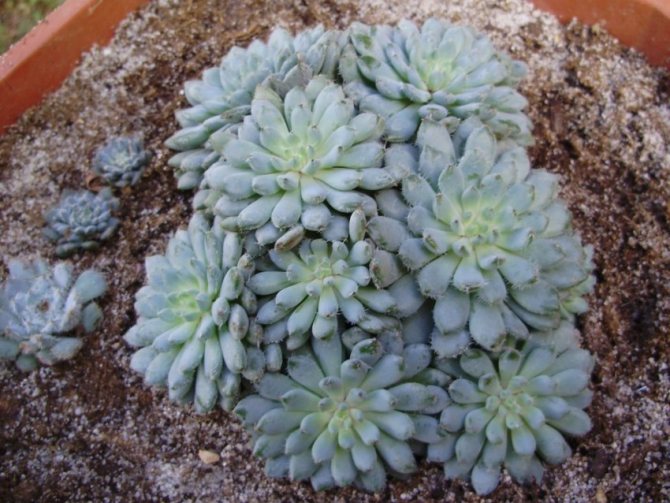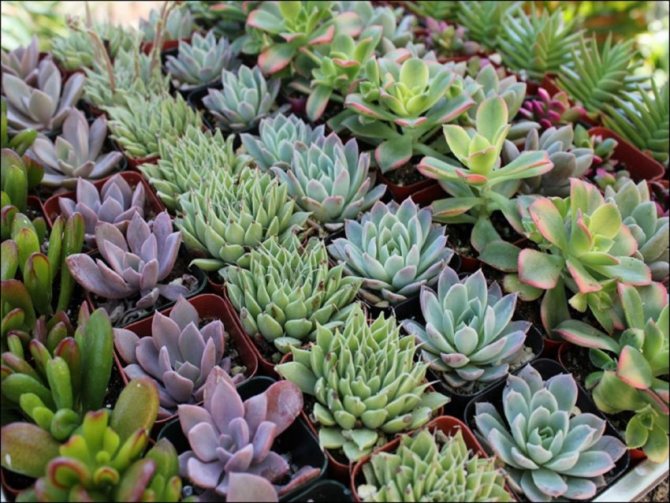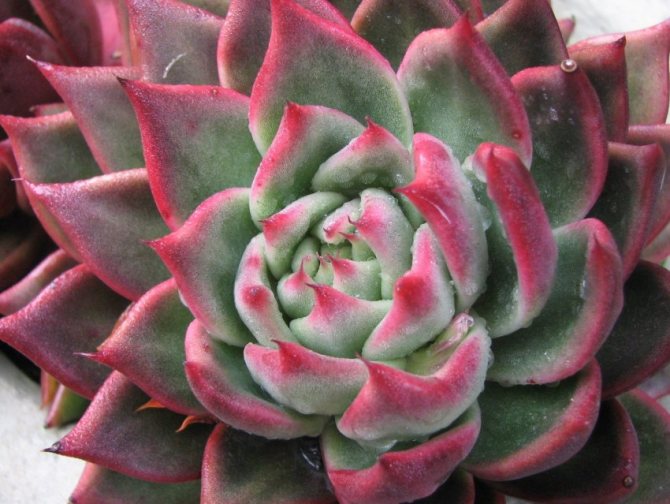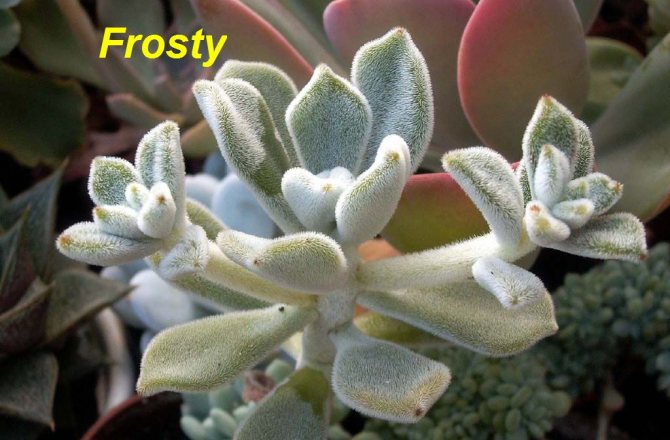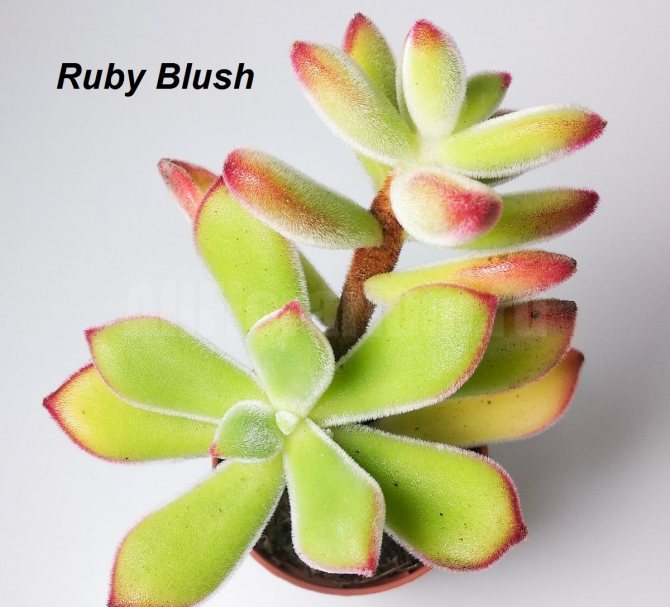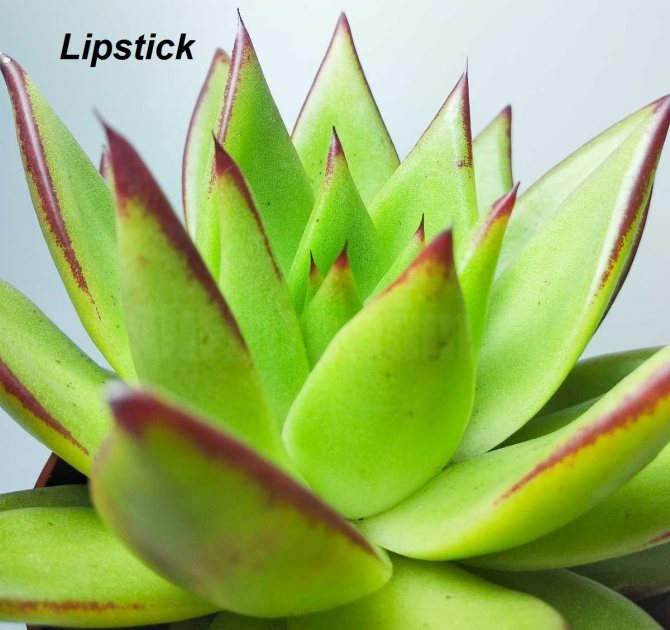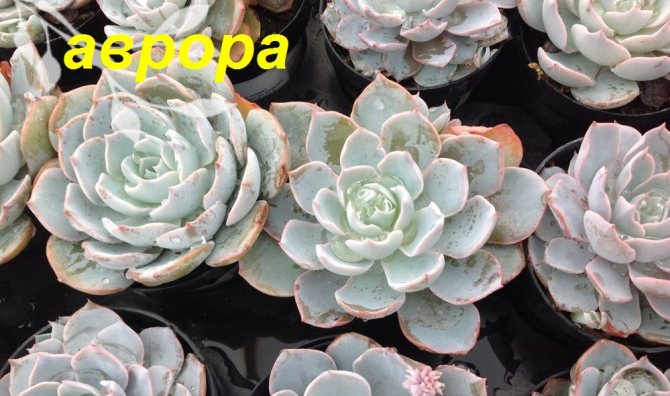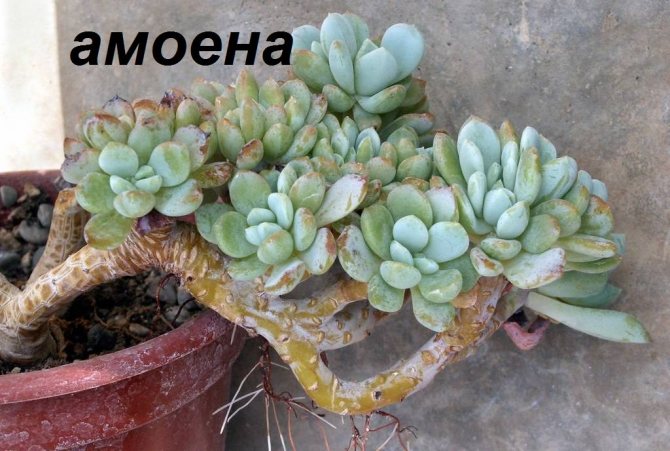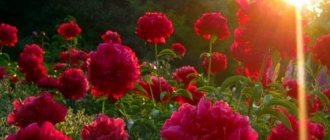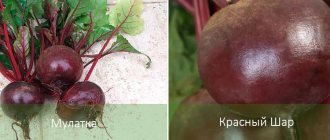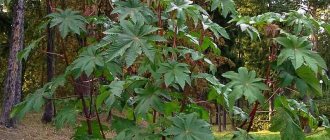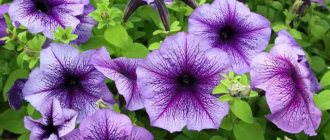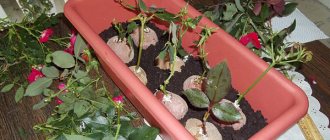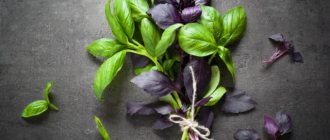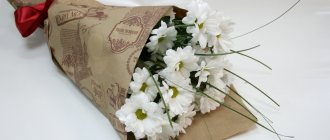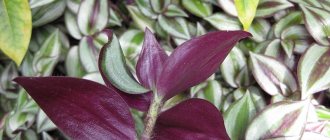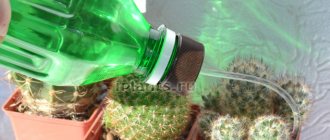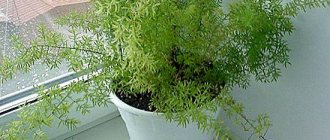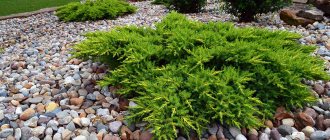Many gardeners like to plant exotic plants at home. One of such interesting representatives of the flora is Echeveria. The people call it a stone rose.
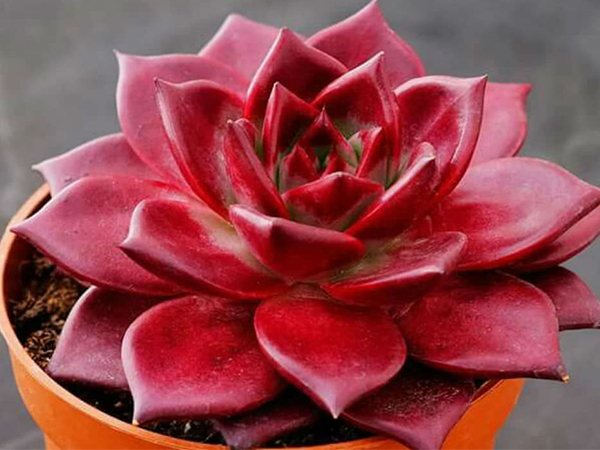
Her unusual appearance and colors made it an indispensable inhabitant for alpine slides and multi-level flower beds and for home window sills. But before planting, it is worth familiarizing yourself with the types and varieties of Echeveria, the photos are presented below.
Pros and cons of the method
Growing echeveria from seeds is one of the rarest methods of growing a stone rose.... It is considered the most time consuming, so it is rarely used. Growing strong and viable seedlings from small seeds requires many nuances and a lot of patience.
However, this method also has a significant advantage. Only those echeveria that are already in the home collection can be grown with rosettes or leaves (you can learn about the propagation of echeveria by leaves here). And if you want to plant new exotic species? It is in this case that they resort to planting plants with seeds.
Popular types
In the genus Echeveria, there are up to 150 species; there are also decorative hybrid forms.
Echeveria is agave. A stemless plant with thick pointed leaves forms symmetrical rosettes that outwardly resemble the flowers of water lilies. The edges of the leaves are slightly transparent and have a pinkish tint. Flowers bloom in summer and are yellow-pink in color.
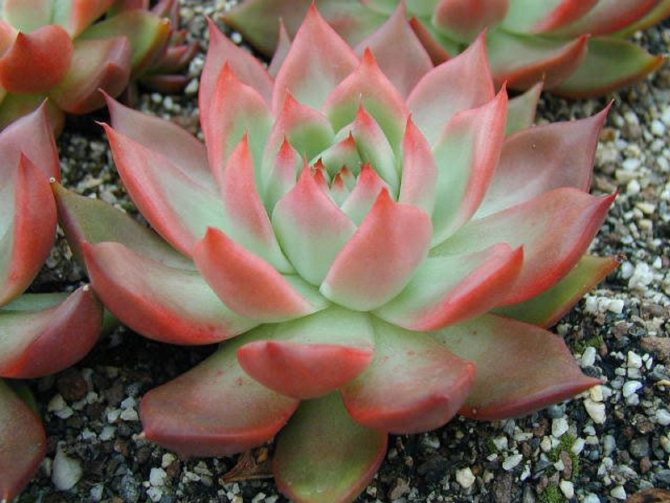

Echeveria agave
Echeveria is graceful. This herbaceous perennial with a short, thick stem is very popular. Its fleshy bluish-green leaves adhere tightly to each other, which gives the resemblance to a stone rose. In summer, orange-red miniature bells bloom on a high peduncle.
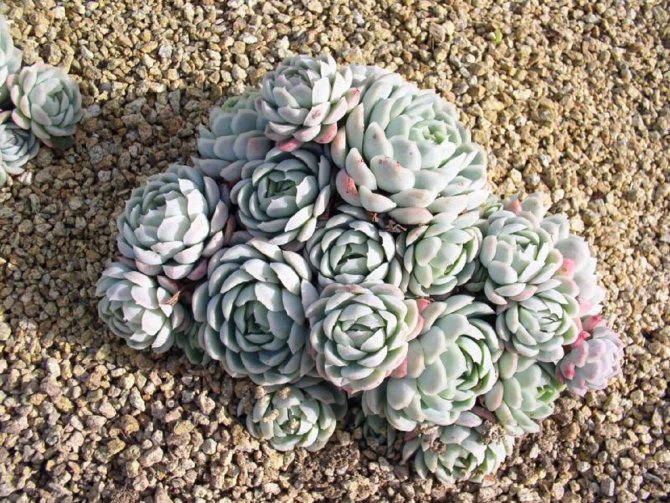

Echeveria graceful
Echeveria Derenberg. The plant has an elongated creeping shoot and leaf rosettes tightly pressed against each other. Wide leaves with a slight taper at the end reach 4 cm in length and 2 cm in width. The light green surface is covered with a matte whitish bloom with a reddish spot at the end. In late spring, a short, dense peduncle with orange buds grows.
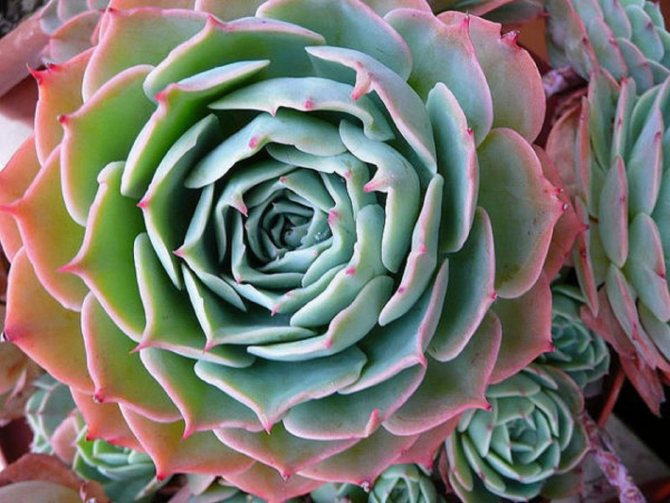

Echeveria Derenberg
Echeveria humpbacked. The flower has a short stem and diamond-shaped flat leaves. The green surface at the base takes on a pinkish tint. Light red buds are collected on a dense erect peduncle. An interesting hybrid variety is Echeveria Nuremberg. It is distinguished by wide pink-gray leaves, which are located on an elongated, gradually bare stem.
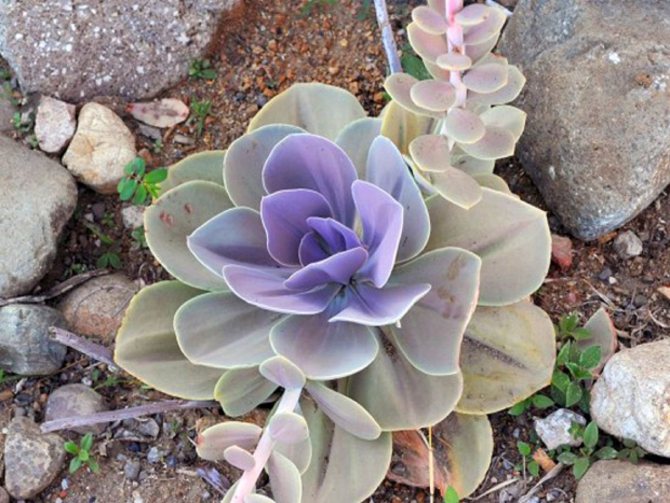

Echeveria humpback
Preparatory stage
Echeveria by its origin is southerner, its homeland is considered to be South and Central America, Mexico. Therefore, in order to grow a succulent, he needs to create conditions that will be as close as possible to natural.
Timing
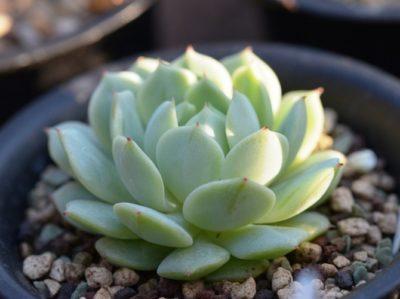

Each plant, like a person, has its own biological rhythm. In Echeveria, the phase of active growth is observed in the spring-summer period. And from October to February, the stone rose goes into a state of rest. Given these rhythms, experts recommend starting planting seeds in late February - early March.
Florists do not recommend knocking down the biological clock of the plant., but if there is a great desire to admire Echeveria in winter, then you can postpone the landing to September-October. In this case, it is necessary to take care of special, greenhouse conditions, implying a sufficient amount of heat and light in severe frosts.
Capacity and soil for planting
For planting succulents, you can purchase a shallow plastic container with a transparent lid. The plant develops well in an ordinary wooden box, organized according to the principle of a greenhouse.
Particular attention must be paid to the soil. To make the seedlings feel comfortable, flower growers recommend taking into account the following points:
- For planting, you can use conventional mixtures, which include a coarse mineral base (fine gravel, sand, agroperlite). It is recommended to add a small amount of granular or crushed coal to such soil.
- A composition that includes the same parts of the following components is considered successful for the development of echeveria: universal peat filler (weakly acidic humus), perlite, sand, crushed coal.
Any soil components can be purchased in specialized stores or taken from the garden, in the forest. But soil obtained from natural conditions must be disinfected using disinfectant solutions, steaming or frying procedures.
Sowing material
To guarantee germination of your seeds, you need to use several recommendations from professionals:
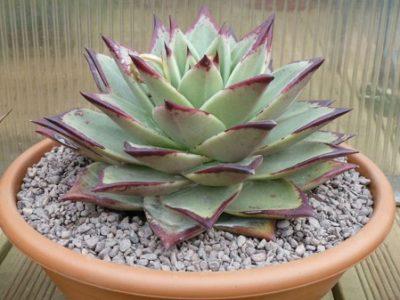

Seed selection... When choosing raw materials for planting, it is imperative to pay attention to the packing date. Seeds that are no more than one year old germinate best. With each subsequent year, the germination of raw materials is significantly reduced.- Disinfection of seeds... To eliminate the risk of developing fungal diseases in the plant, the seeds are placed in a weak solution of potassium permanganate for one day.
- Boosting growth... Special growth stimulants can be purchased at flower shops. They enhance and accelerate the seed germination process. In such solutions, the raw material is soaked (depending on the instructions) for 1-2 hours.
Important! Dry the seeds with regular paper towels before planting.
Home echeveria care
Echeveria needs moderate watering with warm, purified water. The soil should dry out completely between irrigations. Flooding quickly leads to decay of the roots and lower leaves. It is important that water does not accumulate on the stem. If the flower is suffering from drought, the leaves become soft and may wrinkle. In this case, watering is done more often. Excess liquid should leave the pot without hindrance.
Succulents do not need high humidity. They do not respond well to spraying and showering.
Echeveria is fed very carefully. An excess of fertilizer leads to decay of the foliage. If the soil is renewed often enough, then you can completely abandon fertilizing. If necessary, a portion of fertilizer is applied monthly from the beginning of flowering until the end of summer. You need to use formulations for cacti.
With improper care, Echeveria suffers from fungal diseases. Parasites almost never settle on the leaves due to the dense skin.
How to plant?
Seed planting is carried out according to the following algorithm:
- You need to take a thick sheet of paper, fold it in half, and pour the seeds inside.
- Such a structure is brought to a container with a substrate and, by tapping with a light stick, they begin to scatter the seeds into the ground.
- From above, the raw material is covered with a thin layer of sand (about 2 mm).
- If the seeds are very small, then you can not sprinkle them.
- The soil is thoroughly moistened with filtered water (the temperature of the liquid should be at room temperature). In order not to wash off the seeds and not to provoke their deepening into the soil, it is recommended to water from a spray bottle.
- After watering, the container with the seedlings is covered with a lid, cellophane wrap or glass.
Stone Flower
In the nineteenth century, the book "The Flora of Mexico" was published, illustrations for which were done by the artist Anastasio Echcheverria. And among other flowers, it was this one that stood out - like a stone rose. In modern books on botany, it now bears the name in honor of the artist - echeveria (echeveria).
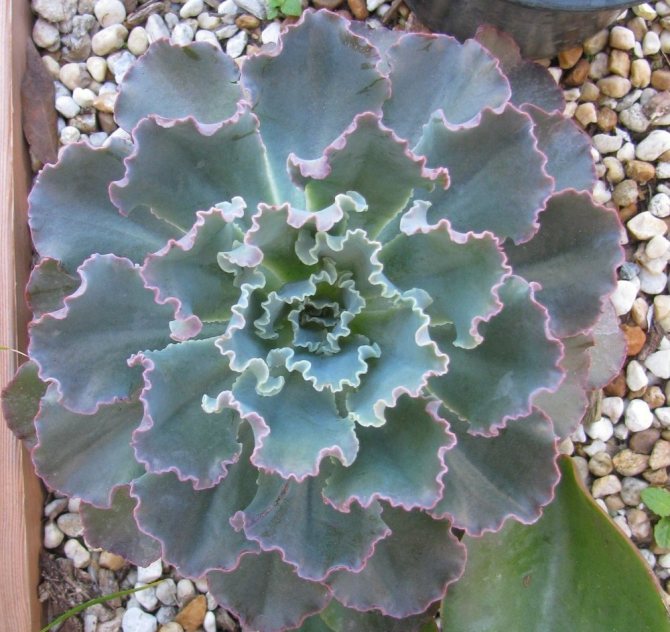

Echeveria is called a stone flower or a stone rose for a neat round rosette of leaves, which can be of different shapes and colors.
Echeveria belongs to the genus of succulents of the jungle family. Its dense leaves are collected in a low rosette from 5 to 30 cm in diameter... In nature, there are about 200 species of this plant, the main difference from each other is the shape of the leaves and their cover.
The leaves in the rosette can be either flat or convex, with a wax coating or fluff, which protect from the sun and frost. In addition, Echeveria species with purple leaves are quite common.
Since the homeland of the plant is Mexico with its bright sunny days, the wild species are almost all short with a short stem. In an apartment without a suitable light regime, Echeveria can stretch out and lose its decorative effect.
Very often, Echeveria is confused with a similar related plant rejuvenated, whose homeland is Europe, the Caucasus and Asia.... It is also called a stone rose. Outwardly, it is really difficult to distinguish them, but the young are much more frost-resistant and can be grown outdoors, in contrast to Echeveria, which dies at temperatures below 6 degrees. Also young, in comparison with Echeveria, practically does not have a stem.
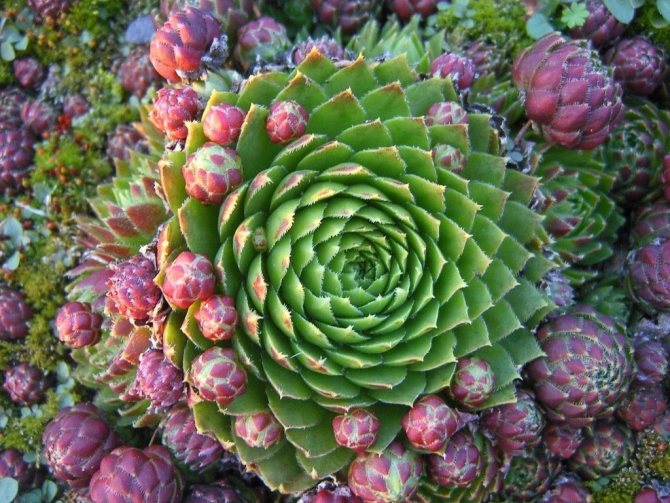

The rejuvenated also belongs to the fatty family, like echeveria
In open ground
Is it possible to plant a heat-loving southerner in open ground? Doing this is completely undesirable. The plant simply cannot bear the harsh cold weather and will die. Florists are advised to initially grow seedlings (by the method described above).
When the echeveria are fully formed, they can be transplanted into the open ground (approximately in May-July). If there is an irresistible desire to plant seeds directly into the soil, then you must proceed as follows:
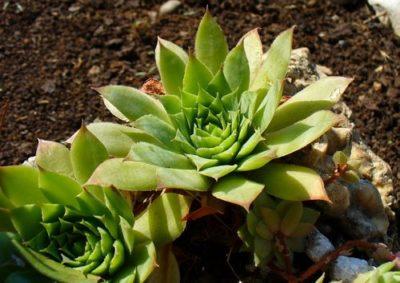

The selected plot of land is spilled with boiling water for disinfection.- The earth is being dug up.
- From all sides, wooden boards are deepened into the soil, which will serve as the basis for the future greenhouse.
- Sand, perlite, coal are added to the soil.
- The soil is mixed.
- Seeds are poured onto the prepared substrate using a piece of paper folded in half.
- Seedlings are watered abundantly with warm water.
- The top is covered with thick glass, capable of providing greenhouse conditions for Echeveria.
If the stem is stretched out or the leaves are wrinkled, we eliminate mistakes in care
| Problem | Symptoms | Decision |
| Lack of light | Pulling out shoots, loss of decorative effect | Place on the lightest windowsill, provide illumination with fluorescent lamps or phytolamps. |
| Lack of moisture | Leaves are lethargic, wrinkled | Increase watering. |
| Aging | Yellowing of the lower leaves | This is a natural process in the life of a flower - remove them as they dry. |
| Excess moisture | The leaves are swollen, watery, yellow | Immediately inspect the roots and soil, transplant the flower into a suitable air-absorbing soil, adjust the watering. |
How to grow?
Each type of echeveria has its own germination time. Some plants will delight you with sprouts after 20 days. Others can sit for 3 months and only then start growing. Therefore, it is important to be patient and provide the future green pet with worthy care. Echeveria does not belong to capricious plants, but needs special care.
It includes the following points:
- Temperature... For thermophilic echeveria, temperatures of + 20 ° C - + 27 ° C are considered optimal. The seeds can easily withstand heat up to + 30 ° С.At night, the temperature can drop to + 18 ° C.
- Seat selection... The southern plant is very fond of light, but it is not recommended to put the greenhouse in direct sunlight. During the emergence and sprouting of sprouts, diffused lighting is more suitable for the succulent. The greenhouse should be located in a place protected from drafts. Even light gusts of wind can destroy a delicate plant.
- Watering... The soil should be moistened regularly. Do not allow the soil to dry out. However, culture should not be flooded either. Stagnant water will lead to decay. It is recommended to water the soil daily and little by little.
When the plants reach a height of 2-5 cm and they have strengthened leaves, the seedlings can be planted in separate pots or planted in open ground.
Transplant rules
Echeveria is a very delicate plant, so extreme care must be taken when transplanting. It is customary to replant young specimens every spring, older plants are transplanted every 3-4 years. It is important to choose small pots with drainage holes in the bottom. First, a layer of pebbles, expanded clay or pebbles is laid in the container and only then light nutritious soil is poured. The earth for echeveria is made up of the following components:
- crushed red brick;
- charcoal;
- peat;
- loamy soil.
It is better to choose shallow boxes or pots and plant in them a kind of mix of echiveria and other succulents.
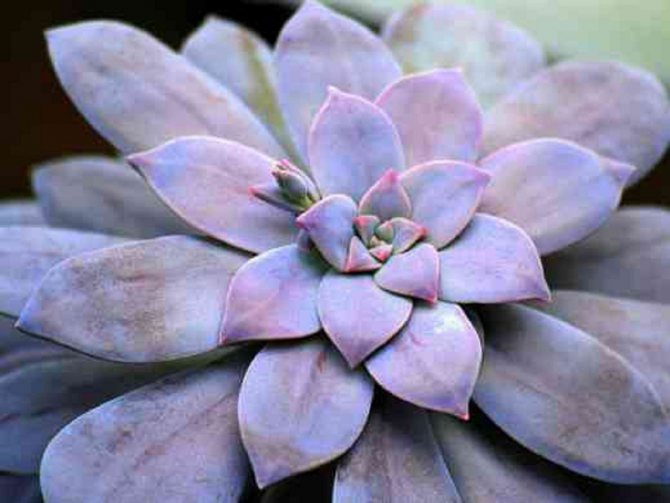

If the plant does not take root
Sometimes a stone rose, despite its unpretentiousness, can seriously frustrate with its appearance and wither just before our eyes. To restore the plant, you need to pay attention to the signals that echeveria gives. So, the most common problems that growers face:
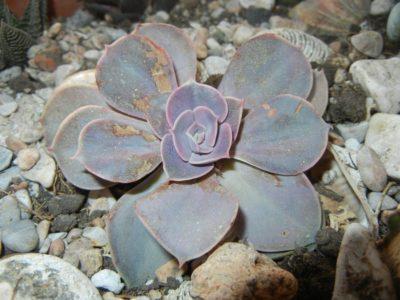

No sprouts appear... If all the planting rules are followed and the seeds are not older than 2 years, then you just need to be patient and regularly moisten the soil. Over time, the sprouts will surely hatch.- Spots appeared on the leaves... Such spots are most often sunburns. It is necessary to remove the plant from the direct rays of ultraviolet radiation and the burns will eventually go away on their own.
- The sprouts turn black, break... Similar problems arise in response to freezing of echeveria or prolonged flooding of the soil. The green pet needs to provide a normal temperature regime and refrain from watering for 2 days.
- The sprouts are very light... So a succulent indicates a lack of lighting. To restore the bright colors of the plant, it is necessary to transfer it to another place, in which more rays of the sun accumulate.
- The sprouts have an irregular, deformed shape.... Most often this is the result of poor-quality feeding. You can fertilize the plant once a month using cactus fertilizers.
Echeveria can become a real pride of a novice florist. An unpretentious plant tolerates the conditions of a city apartment with dignity and is rarely exposed to diseases. And lovers of original compositions can create real masterpieces of the florarium from a stone rose.
If you find an error, please select a piece of text and press Ctrl + Enter.
Bloom
Varieties of echeveria, throwing out arrows, ready to bloom up to 2-3 times a year... But the formation of buds occurs only in favorable conditions. Some succulent lovers do not interested in floweringso when the plant forms arrows, they remove them.
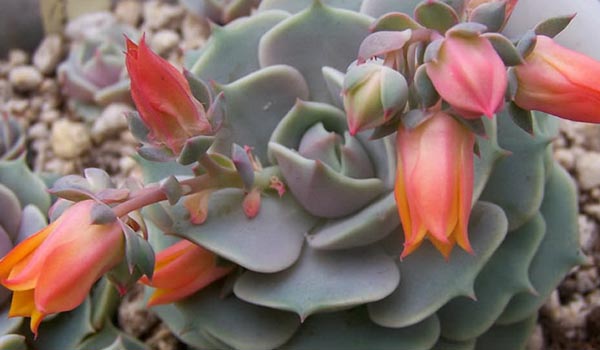

To provoke the budding of a succulent, it is worth extend daylight hours... To do this, you must fulfill the following conditions of detention:
- The room temperature should be +16 .. + 180C;
- The duration of exposure to sunlight on the shrub is up to 12-13 hours;
- Content in such conditions up to 45-50 days.
Only then can you get the desired result and admire the buds... If the plant has bloomed, then it is recommended to increase watering and apply fertilizers containing nitrogen, potassium and phosphorus.
In this video, you will see blooming echeveria and several of its species.
Thus, there are many varieties of echeveria. Topsi Torvi, Rainbow, Globulose and Peacock are rare. Each variety has a special structure and plate structure... Therefore, many gardeners create entire greenhouses from the species of this succulent.
Florist reviews
My flowers all stand on the windowsill, which is located on the sunny side and not all flowers survive there. Today there are only a fat woman, a couple of geraniums, mother-in-law's tongue and cacti. Care for him (echeveria - ed.) Is minimal, water and occasionally loosen the ground. It grows at a good speed and I think in a month or two it will already be necessary to transplant it into a larger pot. Today I already have three plants, two at the moment are blooming, one baby. I bought it while we were in the store, and I don’t regret it a bit. Other flowers perish, and my echeveria grow and bloom.
Idealnaya
I bought it in January, I have it a little different than on the headband: plum-colored, with a gray wax bloom, and the shape of the leaves is different. In summer it is very bright, straight amethyst, in winter it turns pale. She lived in my eastern window, but there was little light, and as a result my "rose" 12 cm in height stretched out. The sight was not very attractive, it began to light up, the top became denser, but the bottom was still bald-friable. It turned out a cabbage on a leg;) And in April a friend came to me. I gave the top with 6–7 leaves to this pest, and it was a pity to throw away the stem with 4–5 leaves, and put it back in the pot. And she left for a month. I come, and there such a multi-headed monster was formed;) < ...> I like this tree even more. Probably, I will take note of such "barbarism";)
Varvara Savelyeva
Always stands on a sunny window, watered as the soil dries. Requires nothing, is not capricious, does not get sick. Over time, my flower turned into a gray-blue cap on a leg, but one day, several years later, she surprised and gathered the whole family around her! Our flower shot an arrow with the same "dusty" leaves, only more rare. “It started to branch off,” we decided, but after a few days “dusty” orange bells appeared on the arrow! With sharp edges and some kind of fabulous golden stamens! We were stunned! And now it blooms constantly! For 7 years already !!! And it continues to grow! Any leaf that falls from it into the ground immediately sprouts, so there will be no problems with its reproduction!))) Funny, but constantly blooming inhabitant of our windowsill! Love her!
ALTAIR_85
Temperature
In nature, it tolerates heat up to +40. At home, you need to provide her with moderate conditions, the air temperature is +23 - +28. In winter, it is better to provide the succulents with a cool climate (up to +10 degrees). The flower can be left on the north window, where the temperature is kept within +18 - +20.
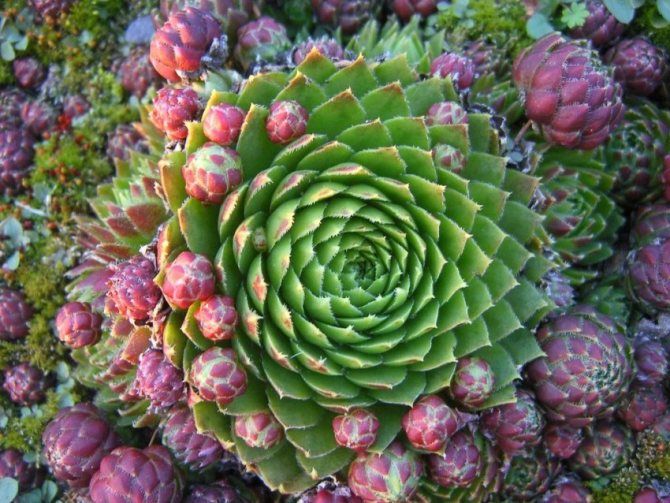

Echeveria is not afraid of minor temperature changes.
Varieties, hybrids with photos
Pearl of Nuremberg
Pearl of Nuremberg (gibbiflora Perle von Nurnberg or pearl von Nuremberg) is a pink-leaved hybrid derived from humpback flowers.
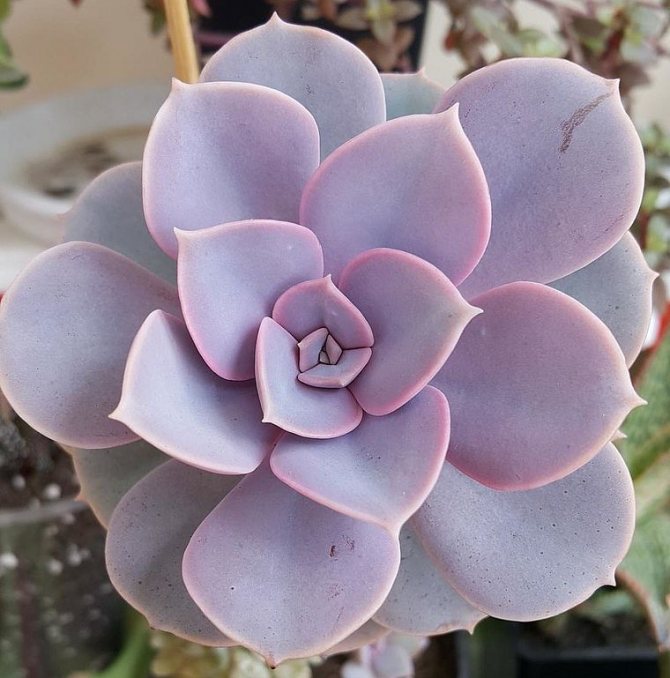

Black Prince
Echeveria black prince, black prince is a light-demanding variety with red-brown leaves. It is often affected by mealybugs.


Lola
Echeveria Lola (Lola) - forms a dense rosette, similar to a rosebud. Coral-colored flowers form on short peduncles. It is a hybrid of Lilicina and Derenbergii.
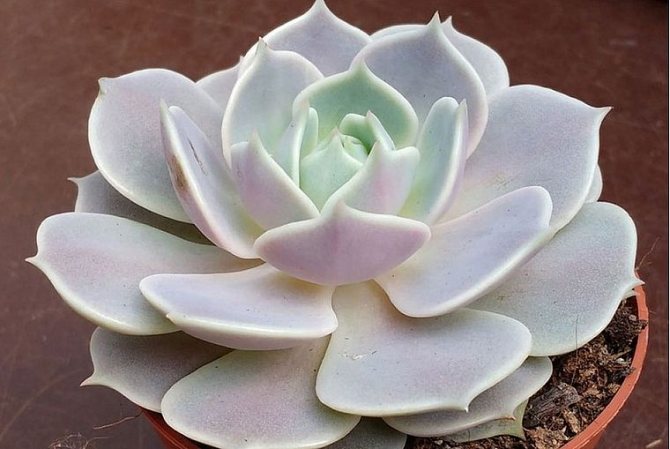

Miranda
Echeveria Miranda - The rosettes are characterized by sharp-edged leaves and a variety of shades. The flower is like a lotus.
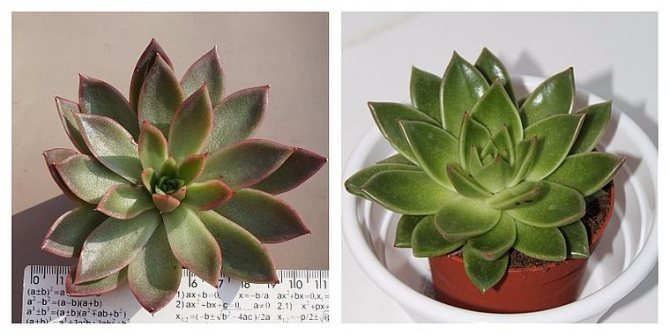

Table with varieties
Some succulent varieties are shown in the table:
| View | Variety | Features of the |
| Agave | Lipstick | Rosette of 20 red petals, red-yellow flowers. |
| Shiny | Flying cloud | The rosette looks like a head of cabbage. |
| Humpback-flowered | Carunculata | Red flowers on long stems. |
| Cushion | Frosty Ruby Blush | The leaves are elongated, triangular. The fuzzy rosette is bright green. |
Echeveria mix are compact multi-colored bushes that are used to create original compositions.
Other varieties of echeveria are also grown, for example, amoena, taurus, aurora, topsi torvi.
What to do if a flower is struck by diseases or pests
Echeveria is very rarely affected by pests, but in most cases it is a mealybug that damages the leaf blades and eats up the roots of the plant... Insect colonies look like dirty cotton wool on the leaves. They are removed with alcohol-treated cotton swabs or washed off with soap suds. In difficult cases, the plant and soil are sprayed with insecticides, for example, Aktara and Fitoverm are suitable.
If you wet the succulent or there was a fungal infection in the soil, it will begin to fade and rot... It is possible to save the plant at the initial stage of infection, using Fitosporin or Trichodermin according to the instructions, but, unfortunately, it is usually possible to detect it only when it is no longer possible to help.
Top dressing
Echeveria grows well in a land that is not rich in minerals. Therefore, fertilizers are used in minimal doses.
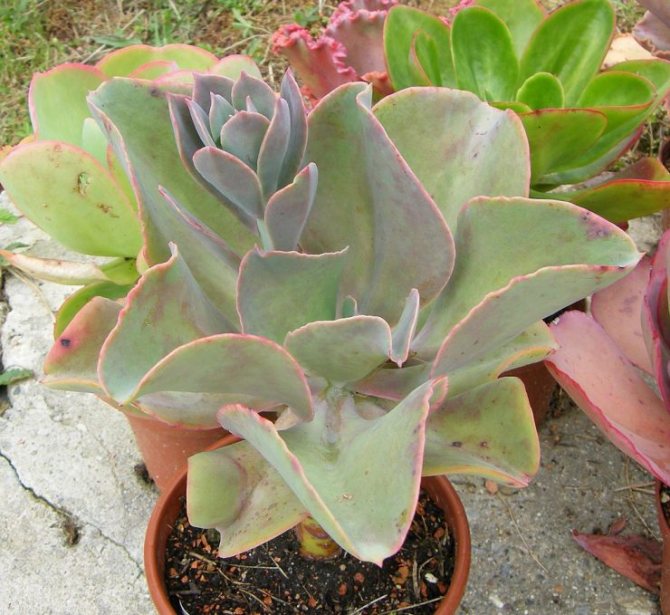

Accepts well the top dressing intended for cacti. It is used monthly with water.
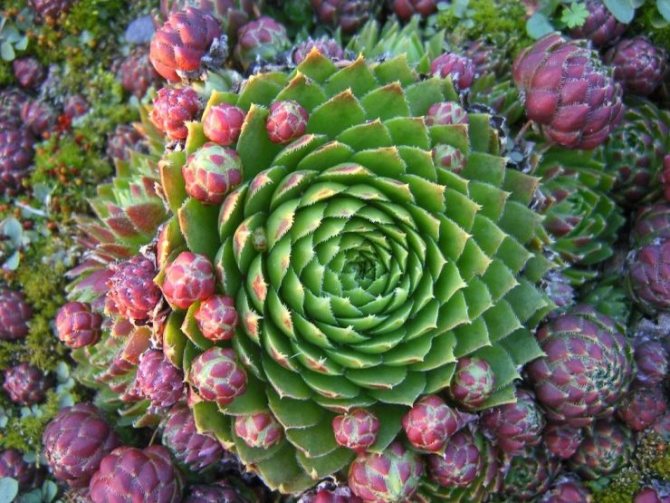

Botanical portrait
Echeveria has tight rosettes of juicy, moisture-filled leaves. Some species are stemless, others form long pagons.
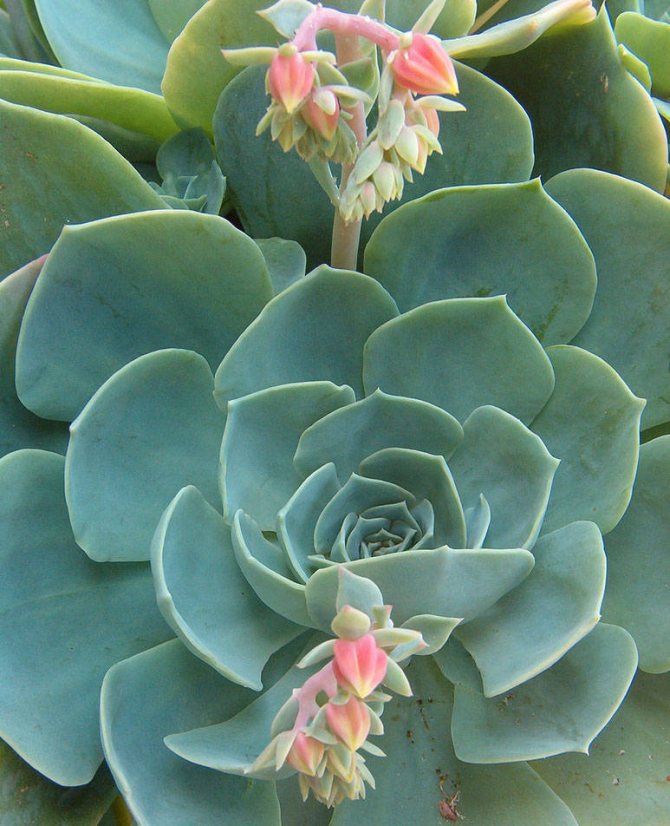

The circumference of the rosettes is different, there are absolutely crumbs with a diameter of 3 cm, but there are plants that form a hemisphere up to 40-50 cm.
The shape of the leaf plates and the color of the different species also differ. Their surface is covered with a waxy coating, which prevents excess evaporation of moisture.
The peduncle appears from the center or side of the rosette, rises significantly above the leaves, sometimes up to 90 cm, and bears an inflorescence of fleshy monumental flowers.
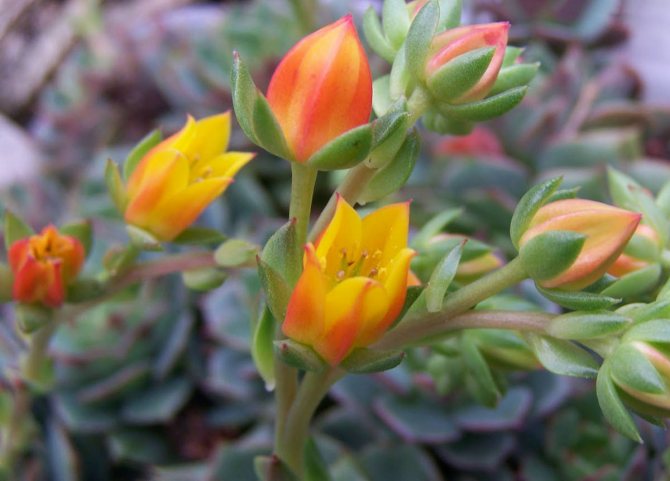

The petals are colored yellow, orange-coral or dark red-brownish, which often depends on the light.
Many growers cut inflorescences, believing that they do not represent a spectacular beauty.
One can argue with this, although the rosettes of leaves are really not inferior in decorativeness to the opening buds of many indoor plants.
Beneficial features
The healing qualities of the succulent have been little studied. There is information about the high disinfecting qualities of plant parts. Cut stems, plates, apply to wounds, cuts, suppuration with boils. There is information about the use of diluted juice for kidney diseases, exacerbations of pyelonephritis. The ancient Aztecs used a refreshing infusion to reduce emotional stress. It is necessary to use prescriptions after consulting your doctor.
It is not difficult to buy echeveria. Seeds, seedlings of various types are sold by shops of seeds, flowers, Internet services.
General information about Echeveria
Echeveria is a genus of the Tolstyankov family (Crassulaceae). They are dicotyledonous, perennial succulent leafy plants. With basal or apical rosettes with fleshy ovoid leaves. They can be pubescent or waxy. There are stemless plants with lodging shoots. The root system of Echeveria is superficial. The inflorescence is spike-shaped, paniculate, small bell-shaped flowers of different colors: yellow, red with brown or orange. There are about 120 species in the genus.


Location
He can live on almost any window, except for the northern ones. In summer, it is recommended to take it out to an open balcony or veranda, but protect the plant from rain and draft. In summer, at the dacha, a succulent will look great on an alpine slide.
In order for the plant to feel good, you cannot do without a good repair on the balcony, with decent insulation.
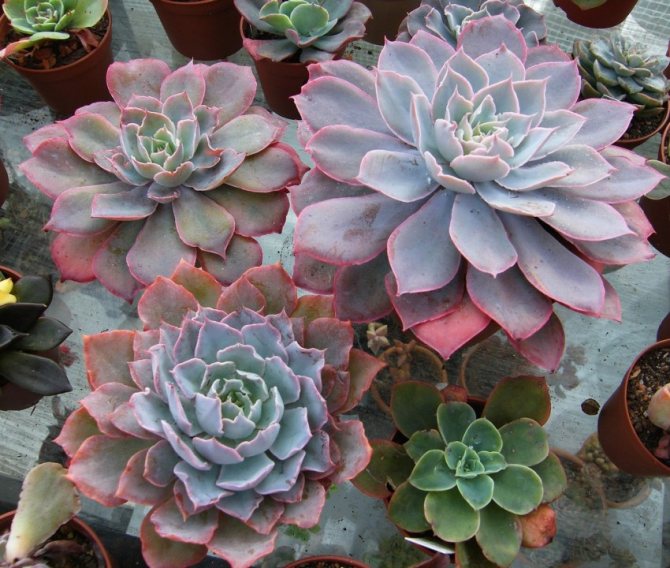

Genus name.
In the Russian language there is no established name for the genus, as, for example, in the fat woman (lat. Crassula) or in the sour (lat. Oxalis). In addition, there is no rule that would clearly define the correct pronunciation in translation. Therefore, you can find the form of Echeveria, or you can find Echeveria. Moreover, the form "Echeveria" has been gaining popularity lately. Perhaps this is due to the fact that in English the combination ch - is usually pronounced as "ch". Although when borrowing it should be pronounced as "k". For example, Orchid (Latin orchis) in English [ˈɔːkɪd]. Most often, the Latin "ch" in Russian is replaced by "x", as in the words Orchid, Aichryson (Latin Aichryson) or Eucharis (Latin Eucharis). In fairness, it should be noted that the plant is named after the artist Atanasio Echeverría y Godoy (Spanish Atanasio Echeverría y Godoy). In Spanish, the combination "ch" sounds like "h".
Reproduction
For reproduction of echeveria, apical and root rosettes, as well as sheet plates, are used. For some varieties, seed propagation is possible, but in practice this is a very difficult method.
How to separate child outlets
This method is considered to be the simplest and most effective method.
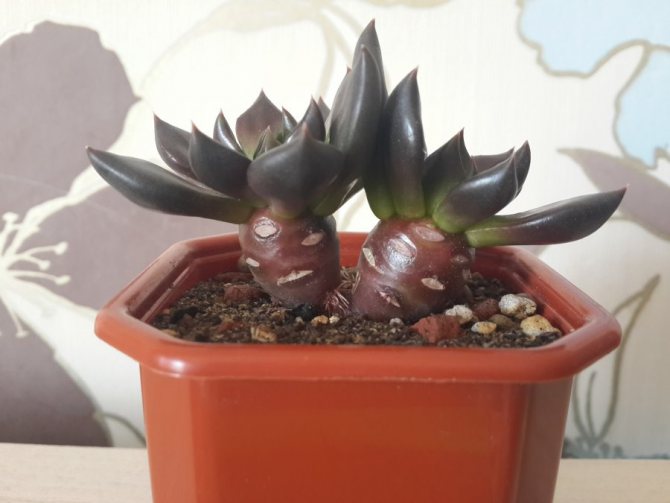

Separating outlets is the easiest and most reliable way to breed echeveria
Breeding stages by daughter sockets:
- Cut off the side outlet.
- The lower leaves are cut off from the handle, they are kept for a couple of hours to dry.
- In the prepared container, soil is poured from sand and garden soil (1: 1), a cut socket is stuck into the soil and watered.
- They create conditions in the form of an optimal temperature regime (from +22 to +25 ° C) and humidity (the soil should always be slightly moist).
- Within a month, the outlet will begin to grow, after a couple of months it is transplanted to a permanent place.
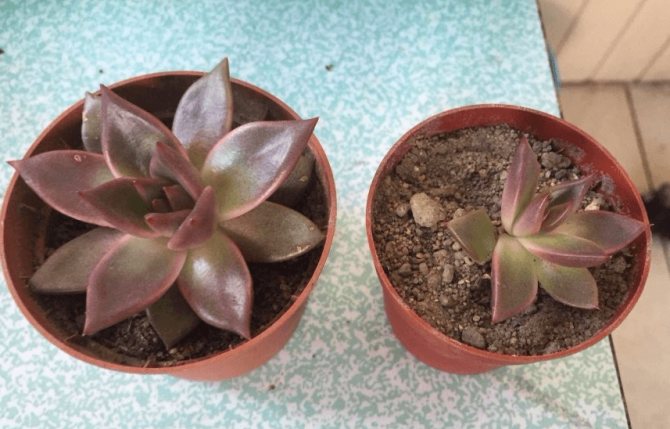

Divided sockets are planted in pots according to size
How to propagate echeveria with leaf and apical cuttings
Echeveria cuttings take root quite simply, while the mother plant from which they were taken continues to grow.
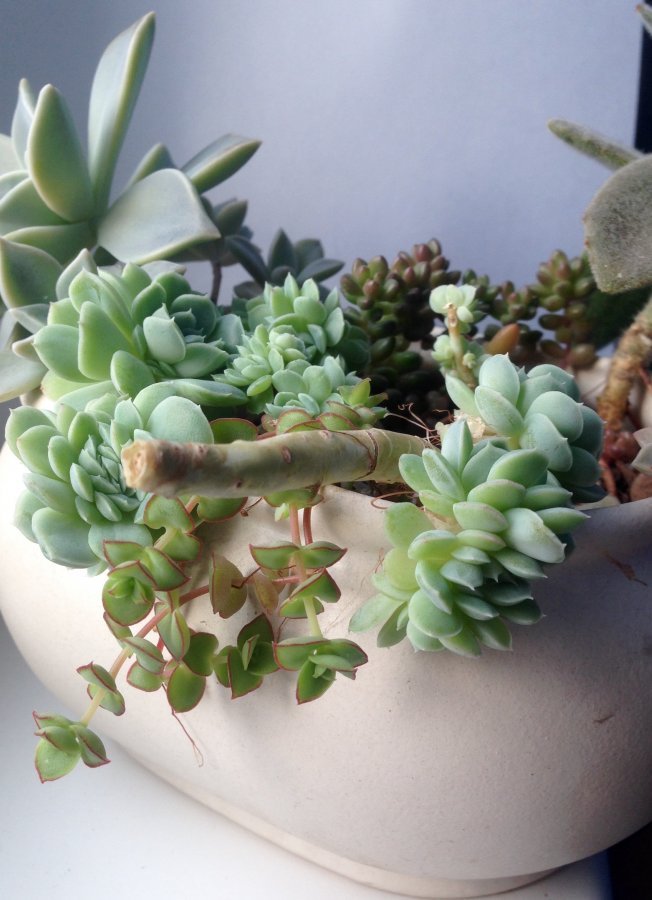

After separation of the apical cutting, the mother plant continues to grow.
Breeding stages:
- Choose the largest healthy leaves of the lower tier or the apical stalk, gently break off. At the top of the shoot, the lower leaves are removed so that there is where to bury it.
- Leave to dry for two hours.
- The soil substrate is prepared from coarse sand and sod land (2: 1). The mixture is placed in a pot and clean sand is poured on top.
- The broken part of the cutting is buried at a slight slope into the prepared soil.
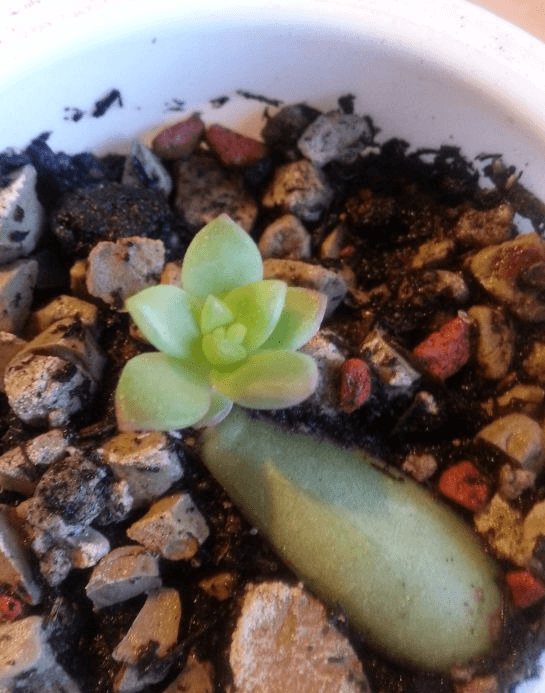

You need to stick a leaf stalk at an angle to allow the outlet to grow vertically
- Cuttings are sprayed and covered to create a greenhouse environment.
- The cuttings are kept at a temperature of about +25 ° C, daily airing and moistening the soil as it dries.
- After about three weeks, the apical cuttings take root, and young rosettes appear in the leaf cuttings, and they can be transplanted after the parent leaf has completely dried out.
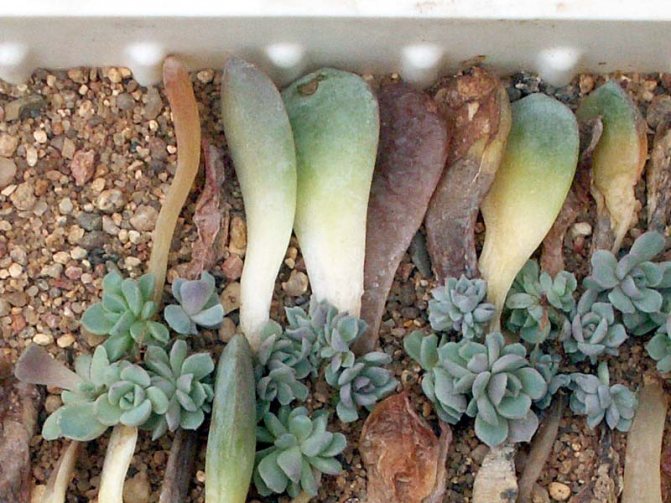

After rooting and the formation of a rosette, the original sheet dies off
Video: rooting echeveria
Possible problems
Common difficulties, problems arising when growing echeveria, are given in the table.
| Trouble | Cause | Elimination methods |
| Damage to protective plaque | The action of water, careless care at home | Follow the rules of cultivation |
| The appearance of fragile stems, leaves of a dark shade | Temperature drop, excess water | Place the pot in a warmer room, reduce watering |
| Pulling out the rosette, the appearance of a pale shade on the leaves | Lack of light | The plant in such conditions can quickly die. It is necessary to increase the lighting |
| Slow growth, small leaves | Poor soil, lack of moisture | Feed, transplant into rich soil, establish irrigation regimes, top dressing |
| Rosette wrinkles | The correct watering is missed in hot weather. | Move to a cooler place, adjust the watering mode |

